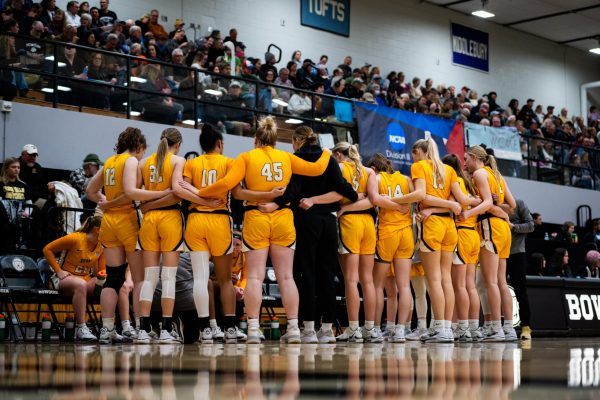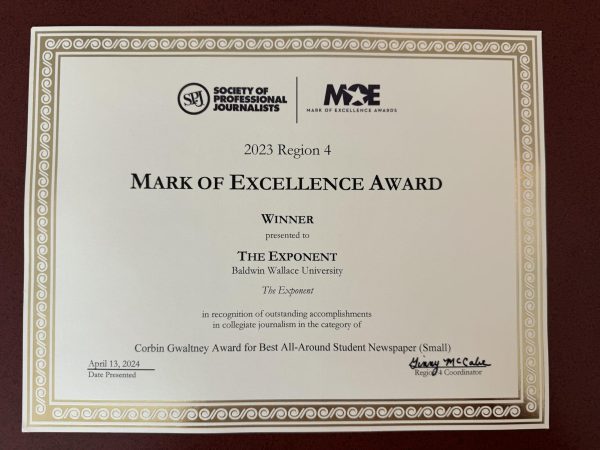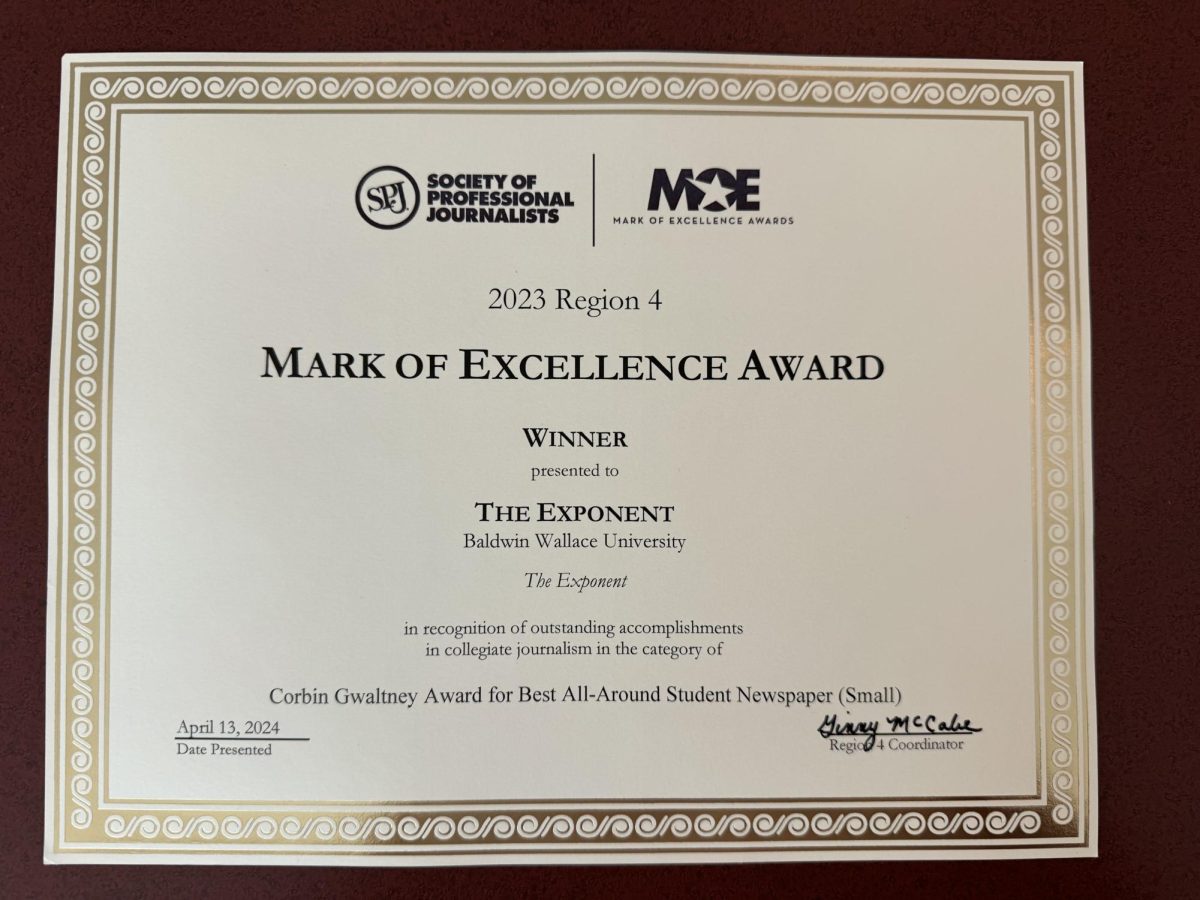Athletics Dept. starts new safety initiative
One of the ways college sports teams have success is through their offseason training regimen. Offseason training consists of lifting weights to improve strength and working on speed and agility with drills.
Baldwin Wallace athletics have partnered with T3 Performance to run offseason training for the school’s athletic teams.
Athletic Director Kris Diaz said that Baldwin Wallace athletics began the partnership in February this year “to manage and coordinate our strength and conditioning programs for all of our student athletes.”
Diaz said the decision trickled down from all divisions of the NCAA as a way to ensure proper safety for student athletes.
“It was a safety consideration,” said Diaz. “There are a lot of injuries that happen in the offseason strength and conditioning people. There came questions of who’s running these programs; do they have the knowledge and experience necessary?’”
Assistant Athletic Director John Snell said that, due to these injuries throughout programs across the country, there has been a crackdown to make sure athletes are getting proper care while training.
“The NCAA wants to make sure institutions are using certified people when it comes to strength and conditioning with their athletes,” said Snell. “They want to avoid anyone going in and putting athletes through some form of workout without having a thorough knowledge of strength and conditioning.”
The use of strength and conditioning coaches are only for offseason training, said Snell, partially because of NCAA rules stating that coaches are not allowed to hold workouts in the offseason.
“Coaches are not allowed to have mandatory offseason things,” said Snell, “so if they can remove the coaches from being strength and condition coaches, then they won’t put those coaches in bad positions.”
Diaz said T3 will only be conducting offseason training, leaving coaches in control of training during their team’s regular season.
During actual seasons, coaches will go back to conducting their strength and conditioning, but the T3 Program will “provide us with information and work with our coaches,” said Diaz.
“Our coaches work with their teams on a regular basis,” said Diaz. “Some of that involves going over to the weight room.”
Funding does create a small concern for the T3 Program moving forward, said Diaz.
For smaller Division 2 and Division 3 schools, Diaz said, funding creates bigger issues than it does for Division 1 programs.
“Division 1 schools could say, ‘we’ll just hire some people,’ whereas [for] the other schools, it’s a little bit more difficult to just add positions,” said Diaz.
For now, Diaz said, funding comes from “a consulting agreement contract” and “fundraising to pay for the services.”
The T3 Program also allows for coaches to step back from their teams for a while so they can focus on other aspects of their team such as recruiting, said Snell.
Snell said that, as of now, the program is proving valuable.
“From our coaches and our athletes, we’ve gotten a lot of very positive feedback from it,” said Snell, “and it seems right now it is a very worthwhile investment for us.”
Diaz said that having professional strength and conditioning coaches ensures proper training for the athletes because of their recent knowledge and willingness to continue learning.
“That’s their career, that’s what they do as a profession,” said Diaz. “Continuous education and up to date knowledge are one of the best things they can provide. They’re spending all their time in that field.”
The Exponent is looking for financial contributions to support our staff and our newsroom in producing high-quality, well-reported and accurate journalism. Thank you for taking the time to consider supporting our student journalists.








































